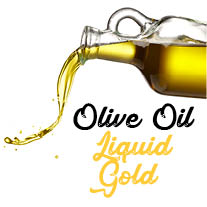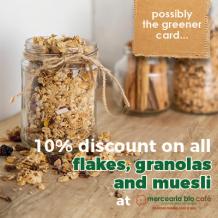Olive Oil - "Liquid Gold"

The olive oil story accompanies Man, who has given him many uses over time. It was dubbed by Omero as "liquid gold" since it served for centuries as the real currency of exchange in the most varied societies. Olive oil is determined by its appearance, its nutritional value and its therapeutic uses.
It is a food product, used essentially as a seasoning, produced from the olive, fruit coming from the olive trees. It is an ancient food, classic of the contemporary cuisine, regular of the Mediterranean diet and in the present day present in most of the kitchens, since it adds to the food a peculiar flavor and aroma.
It has several flavour features defined by the type of olive, leading to the preparation or finalization of several dishes. The type of planting soil, the time of insolation and the techniques of picking and preserving, alter the flavor of the olives, being, therefore, important to know some characteristics of the fruit and its origin.
This way, the oils can be distinguished by their fruity (quality indicator), by the bitterness and the picanza, properties perceived at the moment of the tasting. According to the type of olive and the time of harvest the olive oil can be very or slightly bitter, very or slightly spicy and have scents and tastes green or fruit. The earlier the greener, bitter and spicy is the harvest, the more olive oil will be. The later the more fruit flavor and less bitterness and spice.
Its chemical composition is unique, as well as its nutritional and organoleptic qualities (quality perceived by the senses as aroma and taste) widely recognized, placing it in a privileged position among all oils and edible fats. With obvious benefits to health, proven by numerous studies, olive oil is a food increasingly sought after by the consumer and impacting the economy of our country.
About 1300 to 2000 olives are required to produce 250 ml of olive oil, which should be extracted only from mechanical and temperature methods. Currently, the traditional methods of extraction of olive processing have given rise to modern processes of extraction, using the variation of pressure and temperature.
According to Regulation (EC) No 1308/2013, virgin olive oils are obtained by mechanical or physical means under conditions which do not adversely affect olive oil and which have not undergone other treatments other than washing, decantation, centrifugation and filtration. They are all those obtained through the "juice" from the olives.
In order to classify the oils, a chemical and organoleptic analysis must be carried out in accordance with Regulation (EEC) No 2568/1991 and its amendments. After virgin olive oils are guaranteed, they are classified according to their quality, being able to integrate the categories of "Extra Virgin Olive Oil" or "Virgin Olive Oil", both marketed directly after the extraction, or "Lampante Oliveira", of lower quality and which can only be marketed after being refined. Refining allows you to eliminate unwanted characteristics such as high acidity or scents and abnormal flavors. Refined olive oil can then be packed as virgin olive oils (virgin or extra virgin), resulting in the third commercial type referred to simply as "olive oil". This is always made up of mixed refined olive oil, not directly marketable as extra virgin olive oil or virgin olive oil.
There is still olive pomace being a by-product of olive oil production. Composed basically of the shells, pulp residues and olive stone fragments, this product can be further subjected to solvent treatments or physical processes to extract the remaining fat, resulting in crude olive-pomace oil. This in turn can undergo refining, originating refined olive-pomace oil. The blending of refined olive-pomace oil with virgin olive oils gives rise to olive-pomace oil. So the categories that can be found for sale are:
• Extra virgin olive oil with a degree of acidity of less than or equal to 0,8%;
• Virgin olive oil with a degree of acidity of 2% or less;
• Olive oil with a degree of acidity less than or equal to 1%;
• Oil of olive pomace with a degree of acidity of 1% or less.
Culinary use of olive oil by acidity
Type Acidity Usage
Extra Virgin <0.8% Salads and sauces
Virgin 1.5% Salads and sauces
Semifino 3,0% Salads and fried foods
Refined> 3,0% Immersion fryers
Pure> 2,0% Frying, roasting and marinating
Extra virgin olive oil is recognized by the FDA - Food and Drug Administration - as a food with functional characteristics for its main composition in monounsaturated fat and natural antioxidants. While other oils are produced from the seeds, olive oil is the only oil extracted from the fruit pulp - olive - also having saturated and polyunsaturated fat, such as omega-6 and omega-3 fatty acids, vitamins, antioxidants and minerals , as well as being a source of vitamin E and K.
Of all the fats that make up olive oil, oleic acid (monounsaturated fat) is present in greater amounts and is responsible for reducing inflammation and bringing about cancer-related benefits.
Monounsaturated fats are the most resistant to high temperatures, making extra virgin olive oil a healthy choice for cooking. It has the particularity of helping to raise HDL ("good" cholesterol) and reduce LDL ("bad" cholesterol). Thus, it is recommended that about 20% of the daily calories consumed by a person, come from this fat.
It is considered very nutritious since it has antioxidants that reduce the risk of chronic diseases, as well as help fight inflammation and protect cholesterol from the blood, thereby reducing the risk of heart disease and stroke.
Olive oil has a peculiar characteristic that is resistance to oxidation, since it has a lot of monounsaturated fat, almost no saturated fat and a little polyunsaturated fat. Even so, it should not be preserved for a long period of time, but in comparison with other oils, it is the one with the longest average life span. The main factor that helps with this longevity of conservation, are the antioxidants derived from the juice of the olive. Thus, the more virgin, the greater the presence of these natural components.
Other components of olive oil, such as polyphenols and vitamins, especially E and K, can reduce their average life time, and special care must be taken in the form of storage and preservation, even if they are far from direct light, since they have a short life time.
That way, do not save it! Use it and enjoy all the benefits of olive oil!

green card - flakes, granolas and muesli
For the Mercearia Bio Green Card hol...
Read article



